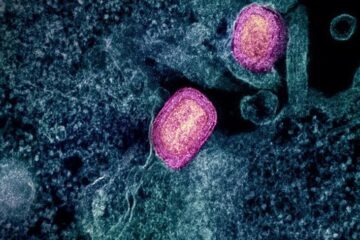Novel oncogenic RET mutation found in small cell lung cancer

SCLC is a highly malignant form of lung cancer representing 15% of all lung cancers and is strongly associated with tobacco smoking.
NSCLC, representing 85% of lung cancer, has been extensively examined for genomic alterations and targeted therapies are approved for patients with certain mutations, however SCLC has not been examined with the same rigor and there are no approved targeted therapies for SCLC.
Investigators at Case Western University examined 6 SCLC tumors, 3 each from primary and metastatic tumors, for 238 somatic mutations across 19 oncogenes. RET wild type and mutant protein was then overexpressed in SCLC cell lines and these cell lines were examined for cell signaling, cell growth and responsiveness to two tyrosine kinase inhibitors of RET.
Results reported in the September issue of the Journal of Thoracic Oncology, the official journal of the International Association for the Study of Lung Cancer (IASLC), revealed the RET M918T mutation in a metastatic SCLC tumor and that overexpression of this mutant protein in SCLC cell lines resulted in increased ERK signaling, MYC expression and increased cell proliferation.
Likewise, these cell lines overexpressing the RET protein became sensitive to ponatinib and vandetanib, tyrosine kinase inhibitors of RET. Decreased cell growth was the result of this inhibition of RET.
The authors say that their work “suggests that RET mutations play a potential role in some cases of SCLC as no other activating mutations were identified among the 19 oncogenes assayed in the tumor harboring the RET M918T mutation, potentially making M918T the driver mutation in this tumor”.
However, the authors caution that “the role of oncogenic RET mutations cannot be judged fairly until a larger number of tumors are genomically analyzed, including metastatic tumors”.
Co-author Dr. Shahab Babakoohi is a member of IASLC.
About the IASLC:
The International Association for the Study of Lung Cancer (IASLC) is the only global organization dedicated to the study of lung cancer. Founded in 1974, the association’s membership includes more than 4,000 lung cancer specialists in 80 countries. To learn more about IASLC please visit www.iaslc.org
Murry W. Wynes, PhD
IASLC Special Projects Manager
(720) 325-2945
Media Contact
All latest news from the category: Life Sciences and Chemistry
Articles and reports from the Life Sciences and chemistry area deal with applied and basic research into modern biology, chemistry and human medicine.
Valuable information can be found on a range of life sciences fields including bacteriology, biochemistry, bionics, bioinformatics, biophysics, biotechnology, genetics, geobotany, human biology, marine biology, microbiology, molecular biology, cellular biology, zoology, bioinorganic chemistry, microchemistry and environmental chemistry.
Newest articles

After 25 years, researchers uncover genetic cause of rare neurological disease
Some families call it a trial of faith. Others just call it a curse. The progressive neurological disease known as spinocerebellar ataxia 4 (SCA4) is a rare condition, but its…

Lower dose of mpox vaccine is safe
… and generates six-week antibody response equivalent to standard regimen. Study highlights need for defined markers of mpox immunity to inform public health use. A dose-sparing intradermal mpox vaccination regimen…

Efficient, sustainable and cost-effective hybrid energy storage system for modern power grids
EU project HyFlow: Over three years of research, the consortium of the EU project HyFlow has successfully developed a highly efficient, sustainable, and cost-effective hybrid energy storage system (HESS) that…





















